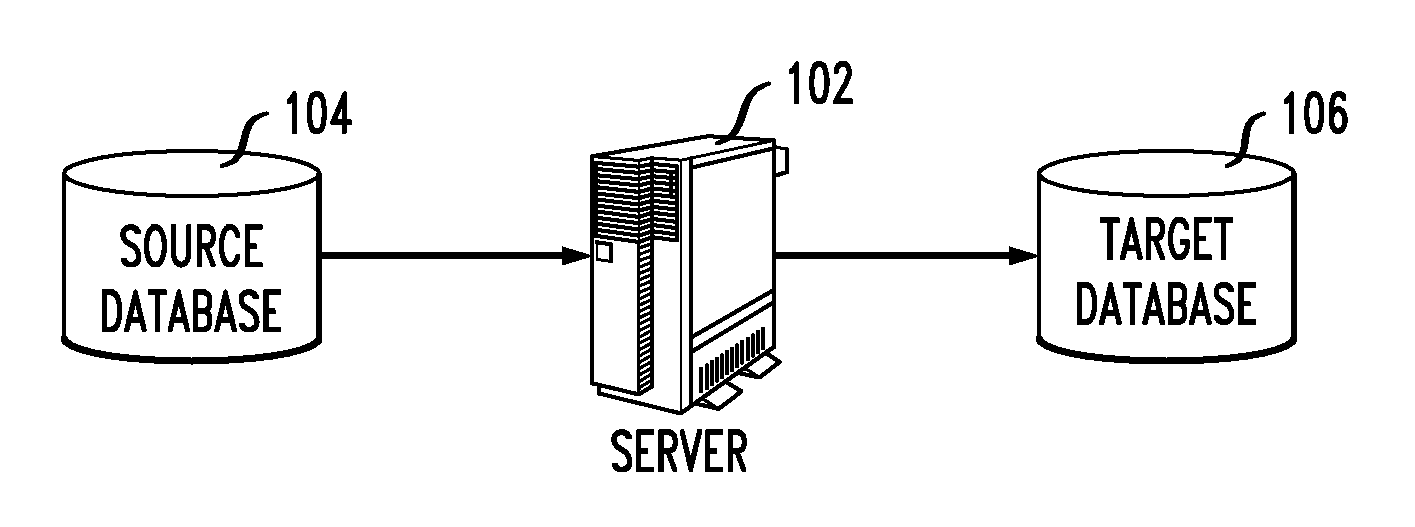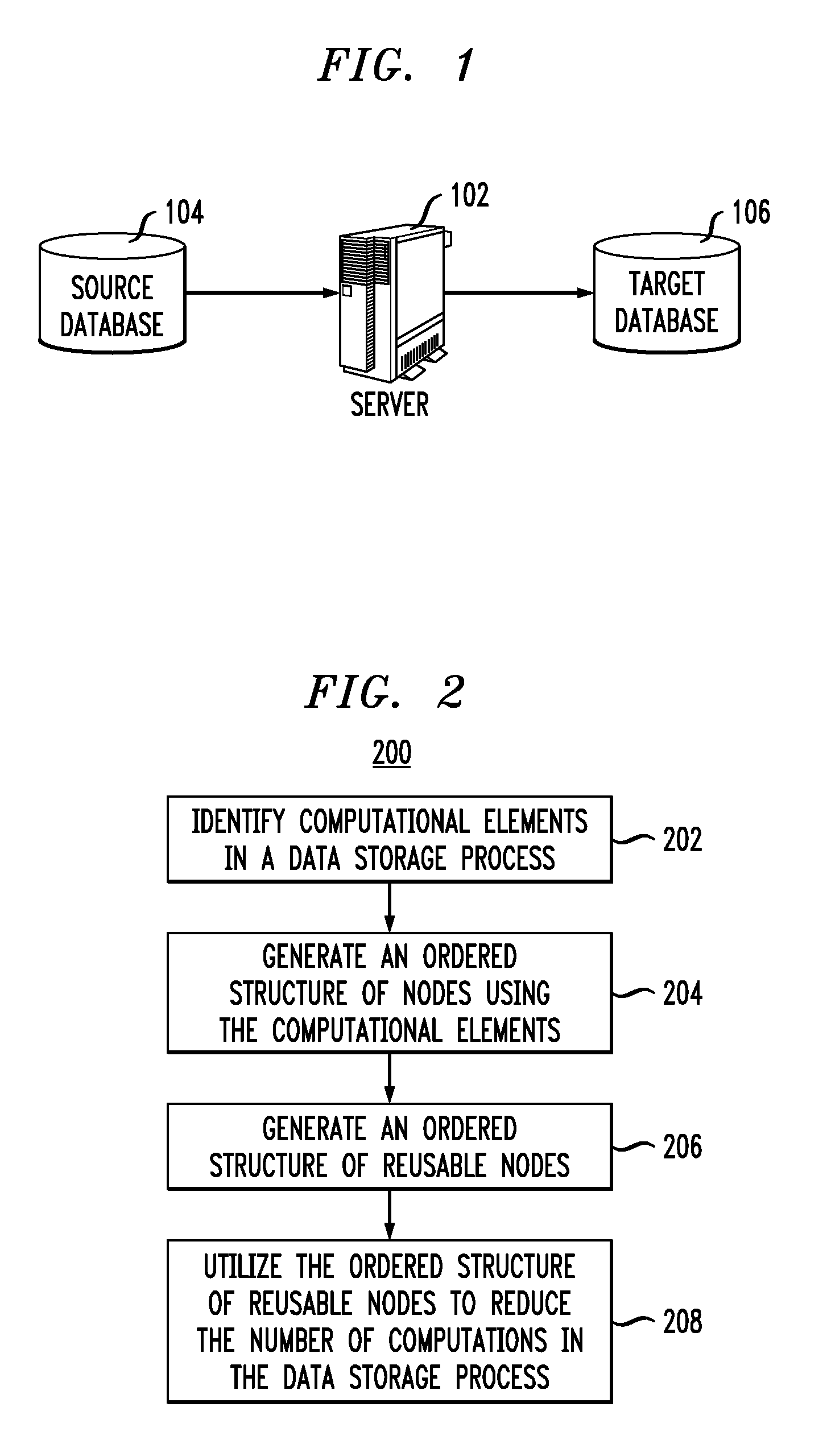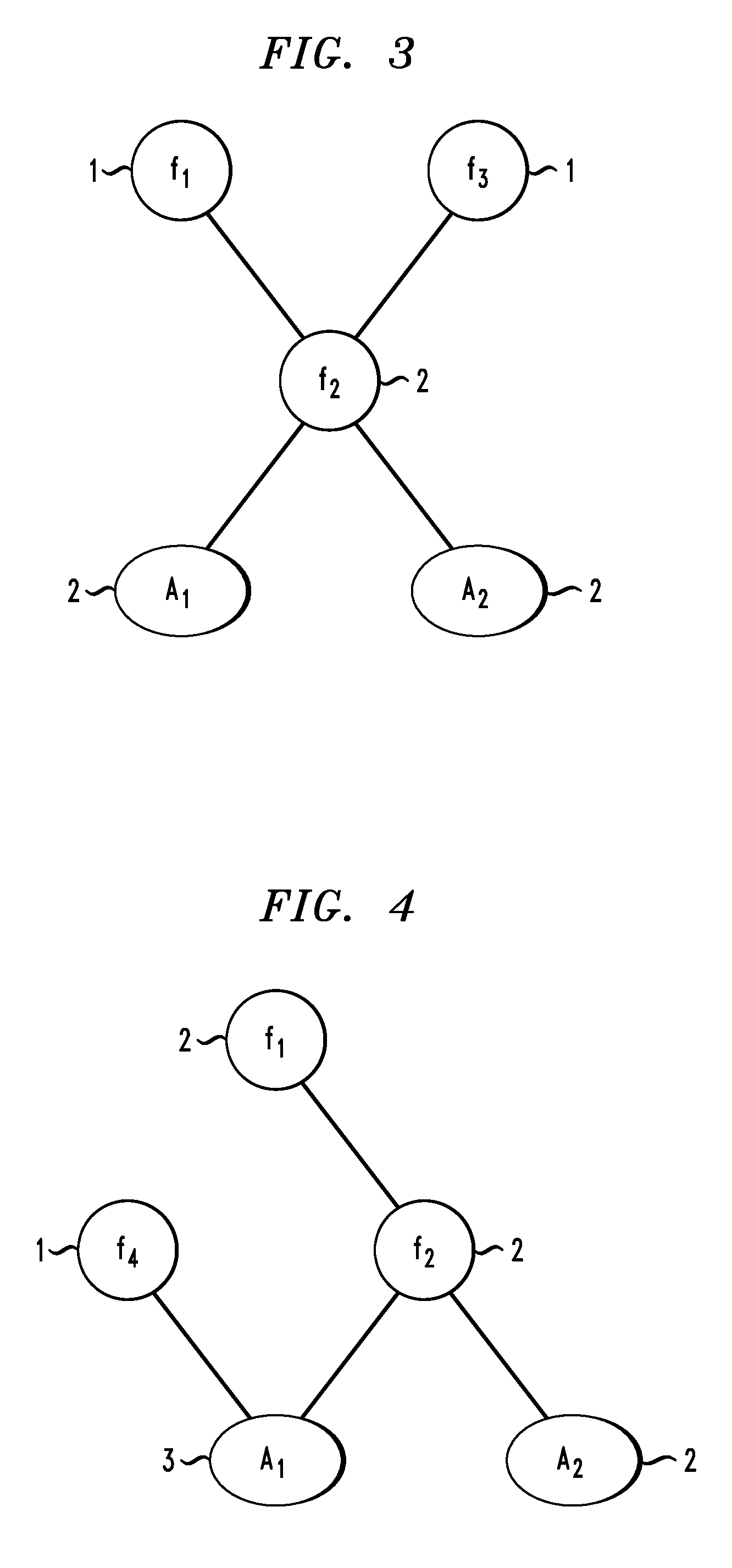Methods and apparatus for reuse optimization of a data storage process using an ordered structure
a data storage and order structure technology, applied in the field of data storage processing, can solve the problems of inefficient data processing, time-consuming and expensive data storage processing, and inability to process unstructured and semi-structured data such as xml, and achieve the effect of reducing the amount of time, money and resources spent, and reducing the number of computations
- Summary
- Abstract
- Description
- Claims
- Application Information
AI Technical Summary
Benefits of technology
Problems solved by technology
Method used
Image
Examples
Embodiment Construction
[0013]The present invention will be described in conjunction with exemplary methods for reducing a number of computations in a data storage process. Specifically, the present disclosure will illustrate optimizing the extraction and transformation steps in an ETL process (e.g., a data storage process) using a weighted Hasse diagram (e.g., an ordered structure). It should be understood, however, that the invention is not limited to the particular embodiments described herein. The principles of this invention are generally applicable to any data storage process optimized through the use of any type of ordered structure, and modifications to the illustrative embodiments will become apparent to those skilled in the art given the teachings described herein.
[0014]The term “data storage process” as used herein is intended to be construed broadly so as to encompass, by way of example and without limitation, any methodology for storing data. A data storage process may comprise, but is not lim...
PUM
 Login to View More
Login to View More Abstract
Description
Claims
Application Information
 Login to View More
Login to View More - R&D
- Intellectual Property
- Life Sciences
- Materials
- Tech Scout
- Unparalleled Data Quality
- Higher Quality Content
- 60% Fewer Hallucinations
Browse by: Latest US Patents, China's latest patents, Technical Efficacy Thesaurus, Application Domain, Technology Topic, Popular Technical Reports.
© 2025 PatSnap. All rights reserved.Legal|Privacy policy|Modern Slavery Act Transparency Statement|Sitemap|About US| Contact US: help@patsnap.com



